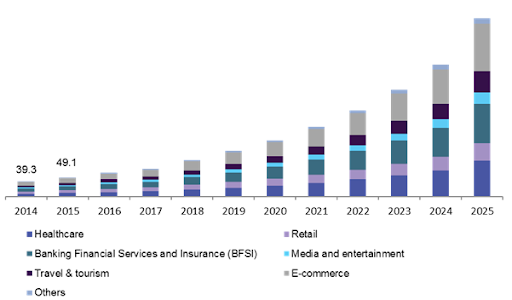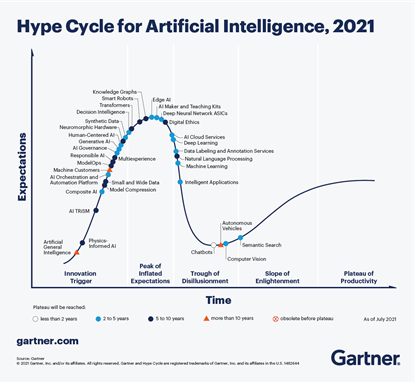Evolution of chatbots and what the future holds
The global chatbot market was estimated to be valued at $17B in 2020, and is projected to reach $102B by 2026, growing at a CAGR of 34.8% over the forecasted period (Mordor Intelligence). Asia Pacific is expected to see the fastest growth, driven by the need for customer support at lower operational costs, an increase in focus on customer engagement and rising demand for self-service operations from consumers.
At Betatron, we are seeing developments in this space first hand, and receive numerous pitch decks from chatbot-based companies. In this post, we share the history of chatbots, use cases and their limitations, and what we believe the future has in store.
Brief history of chatbots and current state
The first chatbot, named ELIZA, was developed in 1966 at the MIT Artificial Intelligence Laboratory by Joseph Weizenbaum. ELIZA produced responses through a mechanized process that involved recognizing keywords and phrases from inputs to produce pre-programmed responses relating to keywords. Numerous iterations of chatbots have followed since the earliest version - ALICE in the internet era of the 2000s (which still serves as the foundation of many chatbots today), and more recently in the 2010s, the advent of virtual and home assistants such as Siri (2010), Google Assistant (2012), Cortana (2015) and Alexa (2015) that performed simple tasks for end users - send a text message, get directions, check flight status and many more.
2016 saw the boom of Artificial Intelligence (AI), and consequently, the exponential increase in usage of intelligent chatbots. Today, chatbots are more powerful than ever before, driven by advancements in AI and Natural Language Processing (NLP) - a process where these bots are able to break down the nuances of human communication and produce human-like responses.
Use cases
Adoption has proliferated across industries - Finance, Healthcare, Education, Real Estate are some industries that have seen the greatest benefits from chatbots. Popularity has surged with changing demands from both consumers and businesses alike. Consumers today expect not only round-the-clock service, but also quick resolution - 82% of consumers rate an “immediate” response as very important when they have a question (Business 2 Community), and chatbots are able to improve customer relationship management (CRM) with seamless live communication, 24/7 support and deliver accuracy rates at upwards of 80%. In addition, the pandemic has fundamentally changed operations of businesses across the globe, leaving room for organizations to introduce technology to transform employee workspaces into interactive environments. Chatbots in the context of HR have seen a wide variety of usage, from automated candidate sourcing and screening to employee onboarding.
Chatbot Market Projections, by vertical (Source: Grand View Research).
In the context of Venture Capital
2020 saw 50% of all chatbot deals lying in the mid to late stages (CB Insights), an unprecedented occurrence, indicating a sophistication of technology and growth of companies in the emergent chatbot space.
Chatbot deal share, by stage (Source: CB Insights).
From a VC’s perspective, chat-bot based businesses need the same traits as other promising businesses to be worthwhile investments: long-term defensibility, strong customer retention, reasonable sales cycles and sound unit economics. As the chatbot market consolidates around scale players like IBM, Microsoft and Amazon, these factors become paramount, especially for companies in the earlier stages.
Limitations and challenges
In a survey conducted by Dimension Research, 81% of respondents reported training AI chatbots with data was more difficult than expected; human intervention is still required in maintenance of chatbots to deliver a smooth experience. Even sophisticated operators have failed to create a reliable, effective chatbot: Facebook’s premature experiment with M assistant on Messenger abruptly ended in 2017 after programs failed to fulfill 70% of user requests.
Past and future expectations
In 2011, Gartner breathlessly predicted “By 2020, customers will manage 85% of their relationships with the enterprise without interacting with a human.” In 2022, however, many believe chatbots lie in the ‘Trough of Disillusionment’ on Gartner’s Hype Cycle, where failures are more apparent and interest has subsided.
Hype Cycle For Artificial Intelligence, Sep 2021 (Source: Gartner).
Betatron takes a more nuanced view.
“At Betatron, we know chatbots are already being used effectively in many industries,” says Arshad Chowdhury, Managing Partner at Betatron. “When we broaden our definition to include automated, text-based alerts and responses, we see that chatbots have integrated seamlessly into restaurant booking, ride hailing, food delivery, medical care and beyond. In this light, chatbots are just one of many integrated tools businesses can use to communicate with customers. “
About Betatron Venture Group
Betatron invests in fast-growing,asset-light B2B companies across Asia (excluding Mainland China). Our investments range between US$250K - US$2M at the Seed to Series A stages. Startups can submit their decks here: http://www.betatron.co/submit-your-deck.html.



